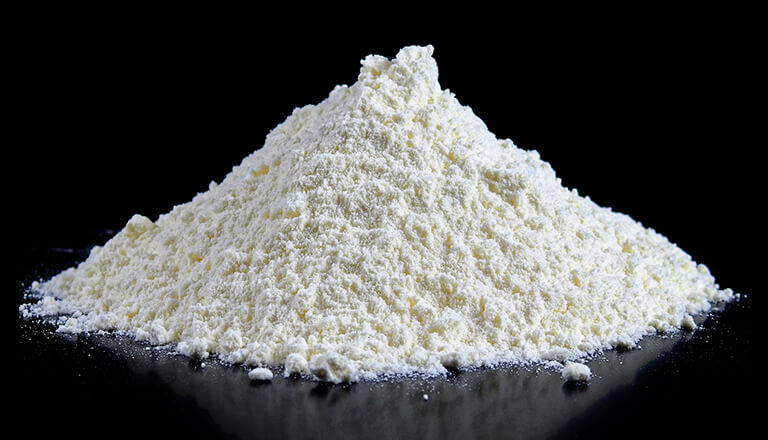Inorganic flame retardant material – Magnesium Hydroxide

Magnesium hydroxide flame retardant has a high decomposition temperature (340°C ~ 450°C), and the thermal decomposition products are MgO and H2O. It does not release any toxic and harmful substances and does not cause any harm to the environment and human health. Therefore, magnesium hydroxide flame retardant has become One of the most popular inorganic flame retardants at present, it has broad application prospects.
Magnesium hydroxide has a special layered structure, which makes it exhibit excellent thixotropy and low surface energy, and plays a good role in flame retardancy and smoke elimination for plastics. Magnesium hydroxide begins to decompose into magnesium oxide and water when heated at 340°C. When it is completely decomposed, the temperature can reach as high as 490°C. It absorbs a large amount of heat energy during decomposition. The specific flame retardant mechanism is:
(1) Magnesium hydroxide has a large heat capacity, absorbs a large amount of heat when it is thermally decomposed, and releases a large amount of water vapor at the same time, which not only reduces the temperature of the material surface, but also reduces the generation of flammable small molecular substances.
(2) A large amount of water vapor generated by thermal decomposition can also cover the surface of the material, reducing the oxygen concentration in the air at the combustion surface, thus hindering the combustion of the material.
(3) Magnesium oxide generated by the thermal decomposition of magnesium hydroxide is a good refractory material. It can not only cover the surface of the material, but also promote the carbonization of the polymer material, forming a carbonized layer to block the entry of heat and air, thereby effectively preventing combustion.
(4) Magnesium hydroxide acts as a redox reaction catalyst and can promote the conversion of CO into CO2 during the combustion process; the magnesium oxide produced by decomposition can neutralize SO2, CO2 and NO2 produced during the combustion process, thereby reducing the release of toxic and harmful gases.
Preparation of magnesium hydroxide flame retardant
1. Physical crushing method
The physical crushing method is a method that uses mechanical or ultrasonic methods to crush and ultrafinely crush natural minerals (mostly brucite) to obtain magnesium hydroxide within the required particle size range. Although the physical grinding method is used to prepare magnesium hydroxide with a simple process and low cost, the prepared magnesium hydroxide has low purity and uneven particle size distribution. It usually requires the use of special grinding methods or the addition of grinding aids (or dispersants) during the grinding process. ) to obtain higher quality magnesium hydroxide. Therefore, its industrial application and development are greatly restricted.
2. Chemical Solid Phase Method
The preparation of magnesium hydroxide by the solid-phase method is a process in which solid metal salts and metal hydroxides are mixed in a certain ratio, ground and calcined, and a solid-phase reaction occurs to obtain the magnesium hydroxide product. This method has the characteristics of simple process and low cost, but it also has shortcomings such as low product purity, easy agglomeration, and poor dispersion performance, and is rarely used in actual large-scale industrial production.
3.Chemical vapor chromatography
The gas phase method for preparing magnesium hydroxide is to use ammonia gas as a precipitant, and directly pass ammonia gas into a solution containing Mg2+ to prepare magnesium hydroxide. Magnesium hydroxide is prepared by gas phase method, and its quality is affected by factors such as ammonia gas flow rate, stirring intensity and reaction temperature. In the process of preparing magnesium hydroxide flame retardant through the gas phase method, due to the stable ammonia concentration, the product has the advantages of high purity, uniform particle size and good dispersion performance; at the same time, no moisture is introduced during the introduction of ammonia gas, and the obtained hydrogen The concentration of magnesium oxide slurry is high, the production process requires a small area, and the unit equipment yield is high. However, it requires high equipment and technology, and it is also prone to the problem of ammonia diffusion and environmental pollution.
4.Chemical liquid chromatography method
The preparation of magnesium hydroxide by the liquid phase method uses magnesium salt as the main raw material, and reacts it with an alkaline substance containing hydroxide ions (OH-) to form a magnesium hydroxide precipitate, which is then washed and dried to obtain the product. Liquid phase methods can be divided into direct precipitation methods, solvothermal and hydrothermal methods, precipitation-azeotropic distillation methods, ultrasonic chemical methods and microwave-assisted methods.
